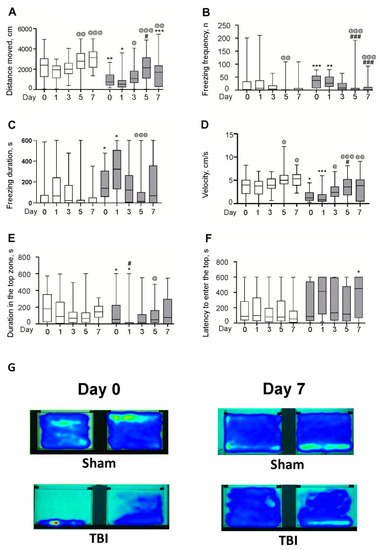Fig. 3
|
Effects of the laser-induced brain lesion (TBI model) on the behavior of zebrafish in the novel tank test on Days 0 (30 min after the lesion), 1, 3, 5, and 7 after the injury. General locomotion was evaluated by the distance traveled (A), the frequency (B) and the duration (C) of freezing, and by mean velocity (D). Cumulative duration in the top zone (E) and the latency to enter the top zone (F) served as indices of anxiety. White bars represent Sham groups; grey bars—TBI groups. Data are expressed as the median with first and third quartiles of the values obtained in an independent group of animals (n = 24–36 per group). * p < 0.05, ** p < 0.01, *** p < 0.001 vs. Sham group on the same day after the injury; # p < 0.05, ### p < 0.001 vs. TBI group on Day 0; @ p < 0.05, @@ p < 0.01, @@@ p < 0.001 vs. the same group (Sham or TBI) on Day 1. (G) Heatmap plots integrally reflecting the position in a tank of an animal during the test for two zebrafish from each group of TBI and Sham groups on Day 0 (30 min after injury) and Day 7. |
| Fish: | |
|---|---|
| Condition: | |
| Observed In: | |
| Stage: | Adult |

